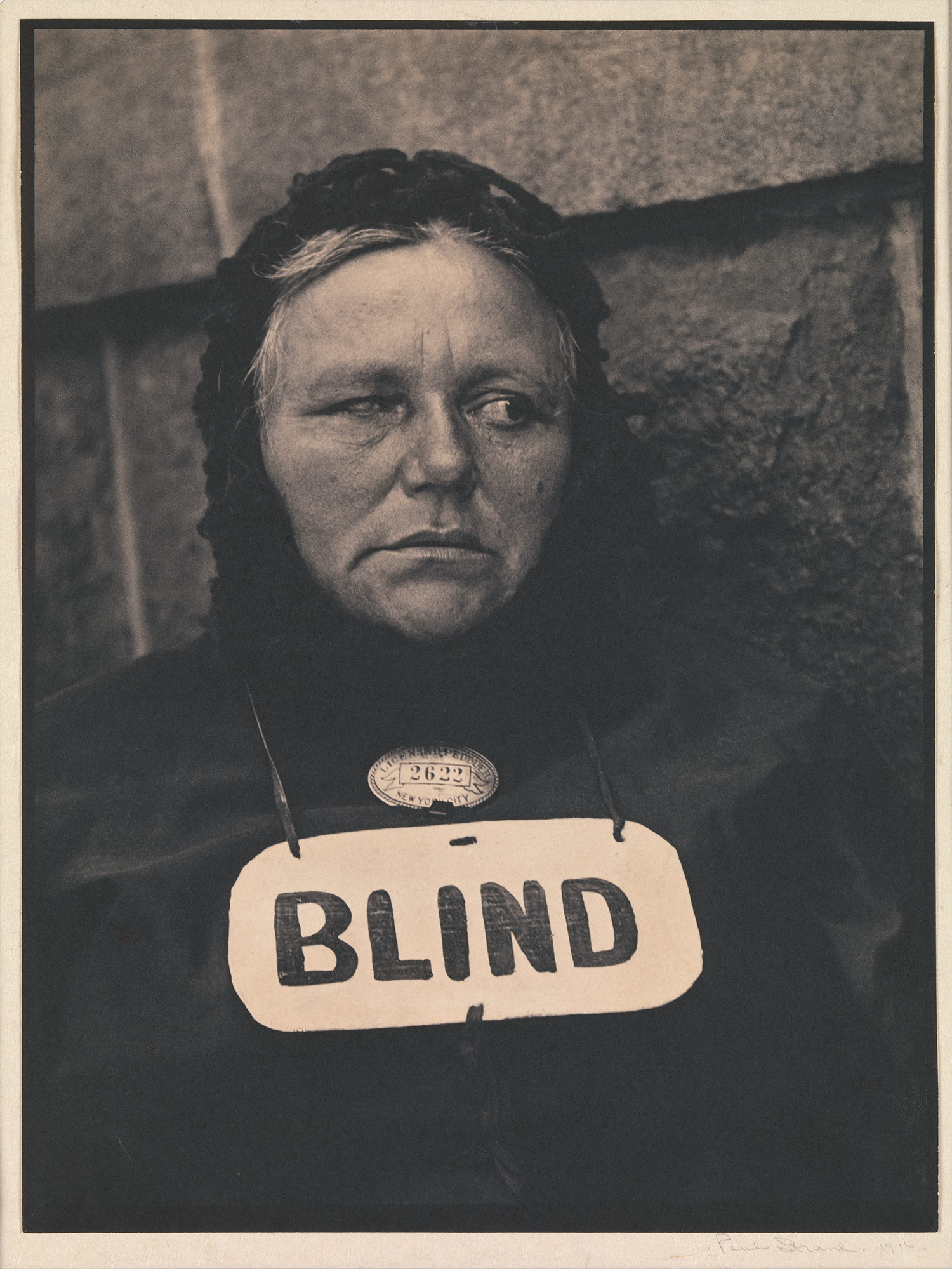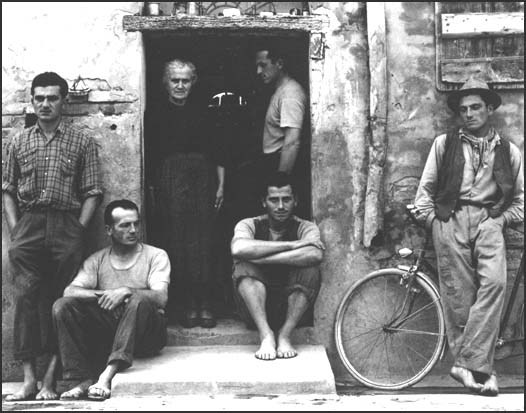Ernst Haas
Haas wasn't interested in photography at an early age, but took advantage of his family’s extensive library, as well as museums and libraries in Vienna. This lead him to study philosophy and poetry, both of which started his interest of the creative potential for photography. 'A Poet's Camera' was one of the pieces which sparked his interested, it included work from artists like Edward Weston. Haas went on to work for 'Life' and was elected to Magnum's board of directors following the deaths of Robert Capa and Werner Bischof in 1954.
Here are some examples of Ernst's work.
Haas' work is all of a similar style, focusing on long exposures, making his subjects look almost dragged out. Although I think the concept is good, I'm not fond of Haas' work, his photographs are dull, and aren't appealing in my opinion. That being said, I can see why his work is popular, it is well shot, and an idea that has not been over used in popular photography.



Garry Winnogrand
Garry Winogrand was a street photographer, although I think his work is more social documentary based, best known for his portrayal of the United States in the mid-20th century. Winnogrand worked alongside Joel Meyerowitz, Lee Friedlander, Tod Papageorge and Diane Arbus in the 1960s, photographing the streets of New York.
Winnogrand's work looks really natural in my opinion, the subjects seem to be doing their day to day activity, instead of posing for a shot. I think this is one of the key features to his photography



Lee Friedlander
Lee Friedlander is an American photographer and artist. His most famous work was made in the 1960s and 70s, working primarily with 35mm cameras and black and white film. Friedlander seems to work primarily with social documentary and urban landscapes, producing contrasty black and white photographs. His book, Stems, reflects his life during the time of his knee replacement surgery. He has said that his "limbs" reminded him of plant stems.
Here are some examples of Friedlander's work, personally I think Friedlander has captured an 'eerie' effect with his photographs, they look like there's more than first meets the eye (especially in his landscape photographs, like the one below). It is clear why Friedlander is as popular as he is, his work is quite unique. For example, the first of the three photographs below has really soft whites and greys, with a few bold black parts in the middle, instantly grabbing your attention and standing out from the rest of the surroundings.



Diane Arbus
Diane Arbus was an American photographer and writer noted for black-and-white square photographs of "deviant and marginal people or of people whose normality seems ugly or surreal." She often referred to her models as 'freaks', due to their deformities, disabilities and 'abnormalities', which was probably why she was so attracted to photographing them. Arbus' work was massively different to the photography being produced at the time, making her stand out, leading her to put up exhibitions in places such as California, Chicago and New York.
Here are some of Diane Arbus' more famous photographs. It's instantly apparent that Arbus has a lot of skill and talent when it comes to photography. Diane has made photographs massively different to each other, which can be seen below. Generally she works with black and white prints, but the qualities like contrast and compositioin are different in pretty much every shot.

.jpg)

Michael Kenna
Michael Kenna is an English photographer best known for his black & white landscapes. Kenna's photography focuses on unusual landscapes with ethereal light achieved by photographing at dawn or at night with exposures of up to 10 hours. Since about 1986 he has mainly used Hasselblad medium format and Holga cameras and this accounts for the square format of most of his photographs. The main exception was for the photographs in Monique's Kindergarten for which a 4x5' large format camera was employed.
I really like Kenna's photographs, so much so I will try using similar techniques (such as the long exposures and composition) in my landscape work. As well as this, I think Kenna has done a fantastic job of printing from his negatives to make smooth, yet high contrast black and white prints. The detail retained from using medium and large format film is great, I don't think the photographs would be anywhere near as interesting if the scenes were shot digitally, or even on 35mm film.
.jpg)


Henry Cartier Bresson
Henri Cartier-Bresson was a French photographer who was apparently the 'father of modern photojournalism'. Cartier Bresson started to use a 35mm Leica very early on in his career. He became inspired by a 1930 photograph by Hungarian photojournalist Martin Munkacsi showing three naked young African boys, caught in near-silhouette, running into the surf of Lake Tanganyika. Titled Three Boys at Lake Tanganyika, this captured 'the freedom, grace and spontaneity of their movement and their joy at being alive'. This was one of the reasons Henry changed his career path from painting to photography.
I quite like Henry Cartier Bresson's landscape work, like the second and third photograph below. Composition is a key part of Cartier Bresson's work, using unusual angles to capture striking images. An example of that would be the second photograph; most people would of shot around the end of the boat, to capture the entire bridge, but I think keeping the boat in, and focusing on that, with a relatively shallow depth of field makes the photograph really 'work'.



Daido Moriyana
Daidō Moriyama is a Japanese photographer noted for his images 'depicting the breakdown of traditional values in post-war Japan'. He produced a collection of photographs, Nippon gekijō shashinchō, which showed the darker sides of urban life and the less-seen parts of cities. In them, he attempted to show how life in certain areas was being left behind the other industrialised parts. Though not exclusively, Moriyama predominantly takes high contrast, grainy, black and white photographs within the Shinjuku area of Tokyo, often shot from odd angles.
Personally, I think Daido's photography isn't that good; A lot of his photographs look more like snapshots than anything else. Also, the way Daido has printed from his negatives makes the lighting and the shawdows look really harsh, this is mainly due to too much contrast when enlarging and printing. Although, I quite like that he hasn't tried to make his photographs perfect, purposely shooting photographs that will turn out grainy really established a signature style for Daido to work from. In a sense, making his photographs look less neat and tidy makes them look more artistic.


.jpg)
Nobuyashi Araki
Nobuyoshi Araki is a Japanese photographer and contemporary artist. Araki was born in Tokyo, studied photography during his college years and then went to work at the advertising agency Dentsu, where he met his future wife, the essayist Yōko Araki (荒木陽子). After they were married, Araki published a book of pictures of his wife taken during their honeymoon titled Sentimental Journey. She died in 1990. Pictures taken during her last days were published in a book titled Winter Journey.
I think Araki's work is quite 'tacky' in all honesty. Although it can't be seen from the photographs I have chosen, Araki is working with the fine line that seperated art and pornography, and in my opinion, Araki makes pornography. As open minded as I try to be, I can't see the artistic side in 9/10 of his photographs, they seem to be a random assortment of nude photographs.



Edward Weston
Edward Henry Weston was a 20th-century American photographer. He has been called "one of the most innovative and influential American photographers" and "one of the masters of 20th century photography." Over the course of his 40 year career Weston photographed an increasingly expansive set of subjects, including landscapes, still lifes, nudes, portraits and genre scenes. In 1937 Weston was the first photographer to receive a Guggenheim Fellowship, and over the next two years he produced nearly 1,400 negatives using his 8 × 10 view camera.
Weston works with black and white negatives, producing a range of both high contrast and soft photographs. I quite like his work, mainly because he's proficient in all areas of photography, unlike most photographs who work mainly in a specific area. Weston's negatives are often dirty, marked or grainy, giving his photographs an 'old fashioned feel' to them.



Paul Strand
Paul Strand was an American photographer and filmmaker who, as well as popular photographers such as Alfred Stieglitz and Edward Weston, is said to of helped establish photography as an art form in the 20th century. Strand worked entirely on black and white film, producing smooth yet high contrast prints from negatives. Personally, I think Paul Strand worked with social documentary and portraits, although others have described him as a 'modernist photographer'.



Rankin
Thomas Joshua Copper
Paul Hill
Larry Trowel
Albert Watson
Ralph Gibson
William Eggleston
Paul Shore
Andre Kertesz
Joseph Sudek
Niecephore Niepce
Louis Daguerre
Eugene Atget
Martin Parr
Carvagio (Painter)
Vermeer (Painter)
All the information has been sourced from Google, Wikipedia and myself (opinions and primary research).
0 comments:
Post a Comment